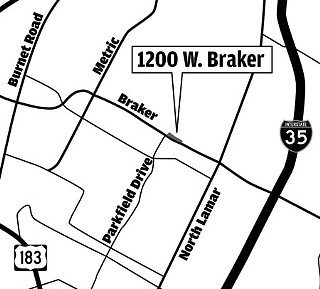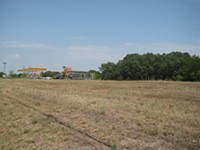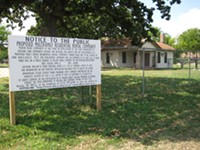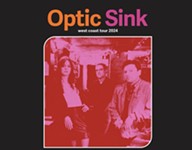Planned Clinic Pits Neighbors Against Health District
Many residents were unaware of proposed clinic until they read about it in the newspaper
By Lydia Crafts, Fri., Aug. 15, 2008
Following two tense meetings between neighbors and public-health officials over a proposed health clinic in North Austin, residents who live near the site are mobilizing to oppose the project – which many didn't know about until they read of the plans in a newspaper story.
The Travis County Healthcare District and the city/county Community Health Centers want to build an $18 million clinic at 1200 W. Braker Ln. to replace the Northeast Austin Community Health Center on Ed Bluestein Boulevard. Health officials have said the existing clinic is too small to accommodate the growing number of uninsured patients in North Austin. But officials also acknowledge, in so many words, a strategic misstep in failing to reach out to the nearby North Park Estates and Gracywoods neighborhoods before news of the clinic broke. Larry Wallace, the district's associate administrator, said the district had intended to engage the neighborhoods as part of its evaluation of the location. Some neighbors said they first learned about the project through a Statesman article. That's when Walt Esquivel, president of the North Park Estates Neighborhood Association, initiated contact with the district. "The process has been broken," Esquivel said. "You see this happening over and over again all over the city. People take our tax money, and they're supposed to represent us, but they don't seem to remember that when they want to put something in our neighborhood."
The proposed clinic is the district's first capital project (sparking its first major controversy) since county voters in 2004 overwhelmingly approved financing a countywide "safety net" for a growing number of residents without health insurance.

Esquivel says he has already gathered enough signatures on a valid petition to require a supermajority vote (6 out of 7) from City Council on the rezoning and claims to have hundreds of signatures from neighboring taxpayers opposing the project.
Preliminary plans for a new clinic call for a two-story, 50,000-square-foot building that would serve twice the number of patients as the current facility. Project representatives also said they would maintain a 100-foot buffer to shelter the neighborhood behind the clinic and place the clinic's two vehicular access points on West Braker Lane. Although the proposed 7.4-acre parcel is on a high-traffic roadway and is flanked by a Shell gas station, the property line abuts a quiet neighborhood of attractive single-family homes. While some opponents believe a health clinic would disrupt the peaceful nature of the neighborhood, public-health officials say a neighborhood setting such as this is ideal for a health clinic whose patients are primarily women and children. To make way for the clinic, the city would need to rezone the site from Neighborhood Office, which allows only small offices that are compatible with the immediate neighborhood, to Limited Office, which permits medical offices and other professional uses "predominantly" serving the neighborhood. The Zoning and Platting Commission is scheduled to consider the rezoning on Sept. 16.
Neighbors have been particularly vocal in their opposition to the proposed location, which they say is too far north to serve the indigent population in North Austin (they say the clinic should be closer to Highway 183 and Lamar). When a project representative cited data at a July 31 meeting showing more than 30,000 people in the surrounding neighborhoods are eligible to use the clinics, most of the estimated 150 residents in attendance erupted in loud protest. (The Indigent Care Collaboration, which serves as an umbrella organization for affordable health-care service providers in the Austin area, tracked residents from 78758 and 78753 ZIP codes who used community health clinics or received discounted care at hospitals between July 2007 and June 2008.) Based partly on the study, as well as 2004 data indicating a need for a community clinic in the area, officials believe the location is convenient for clinic patients. "One of the things that has been happening in terms of patient demographics is there has been a movement from the Northeast to the North Central area," said district spokeswoman Christie Garbe.
But officials also admitted that the proposed site was not their first choice for the clinic. They initially considered remodeling an Albertsons grocery store at 8716 Research, between Ohlen and Payton Gin roads, and considered property near Highway 183 and I-35; in both instances, the cost was too high, they said. In May, the district signed a purchase contract for the Braker Lane property for $1.37 million. Since then, said Wallace, officials have been exploring the viability of the site while trying to alleviate neighborhood concerns.
Six North Austin neighborhood associations have scheduled an Aug. 26 meeting in which Mayor Pro Tem Brewster McCracken will serve as moderator. Although opposition to the clinic is strong, some people, including former patients of city/county clinics, spoke in favor of the facility at one recent meeting. "I can't see any reason not to support it," said Charles Thornton, a resident of the Walnut Creek neighborhood. "It's our responsibility as citizens to care for these people." According to the district, the city and county's "safety net" for low-income residents serves as the primary health-care provider for 50,000 children and adults. Statistics also show that 49% of the patients are uninsured (no surprise, since Texas has the nation's highest percentage of uninsured residents), 29% are on Medicaid, and the remaining patients receive some other form of public assistance.
While the district hopes to close on the Braker Lane property by Dec. 1, officials have not yet determined how they will finance the project. District representatives say they would probably use a combination of reserves and certificates. The district could also impose a slight tax to help repay any debt, but Trish Young Brown, CEO and president of the district, said it has enough reserves available to pay for the project if necessary.
Got something to say on the subject? Send a letter to the editor.










